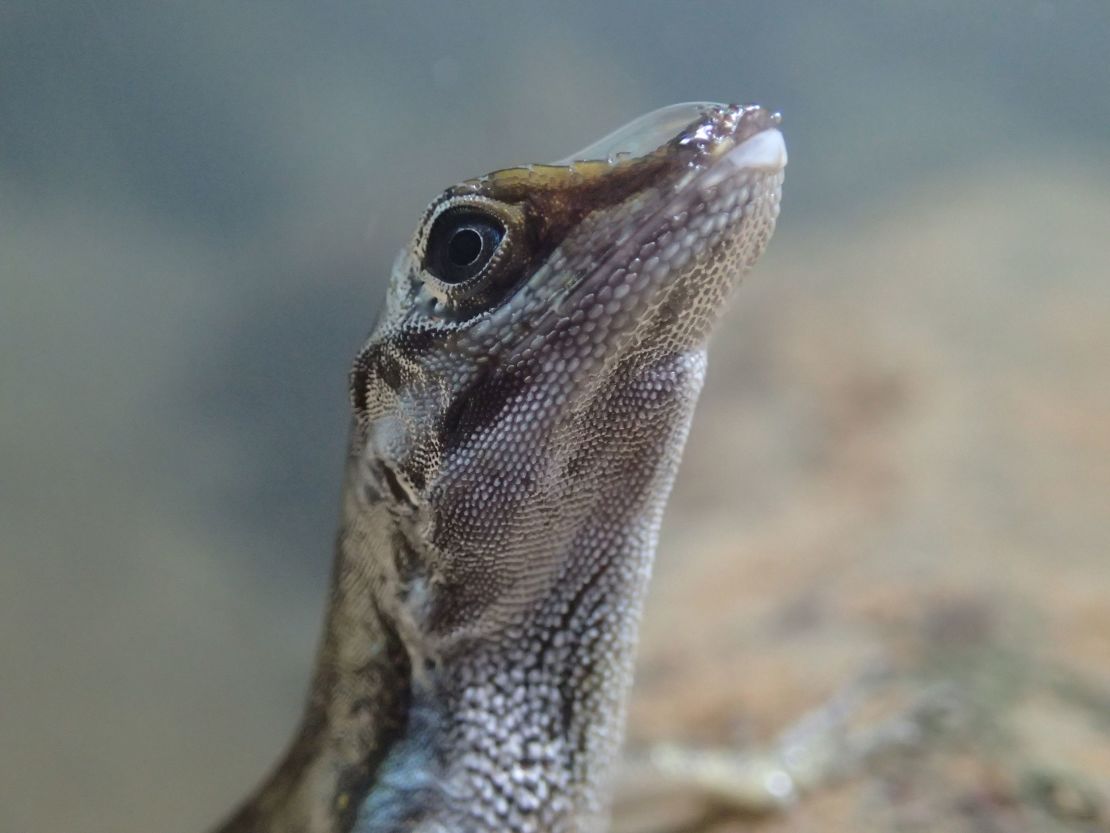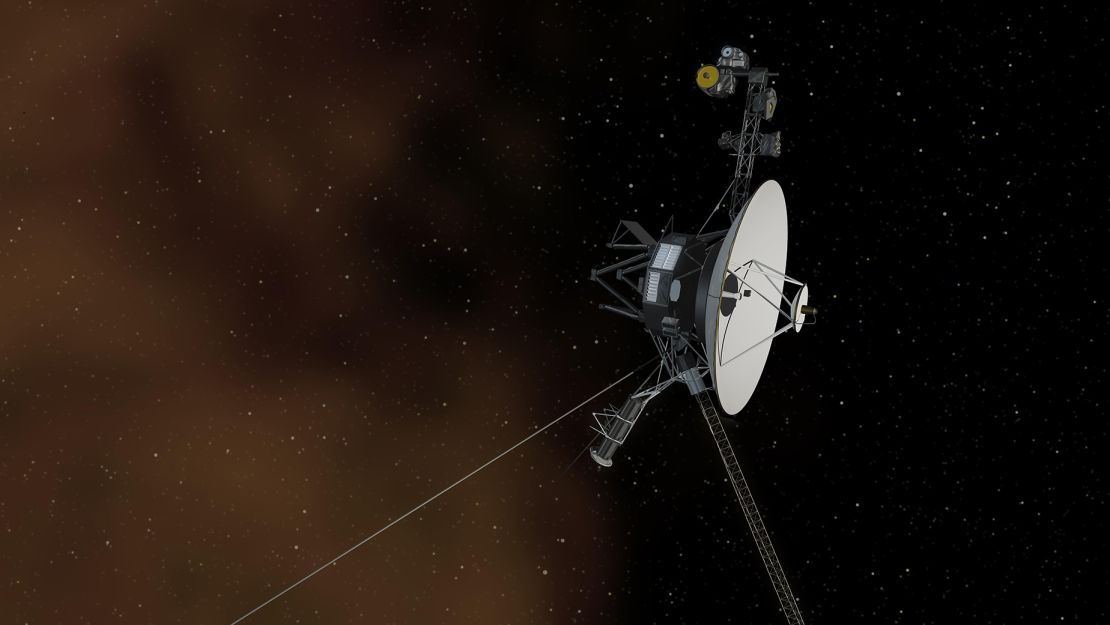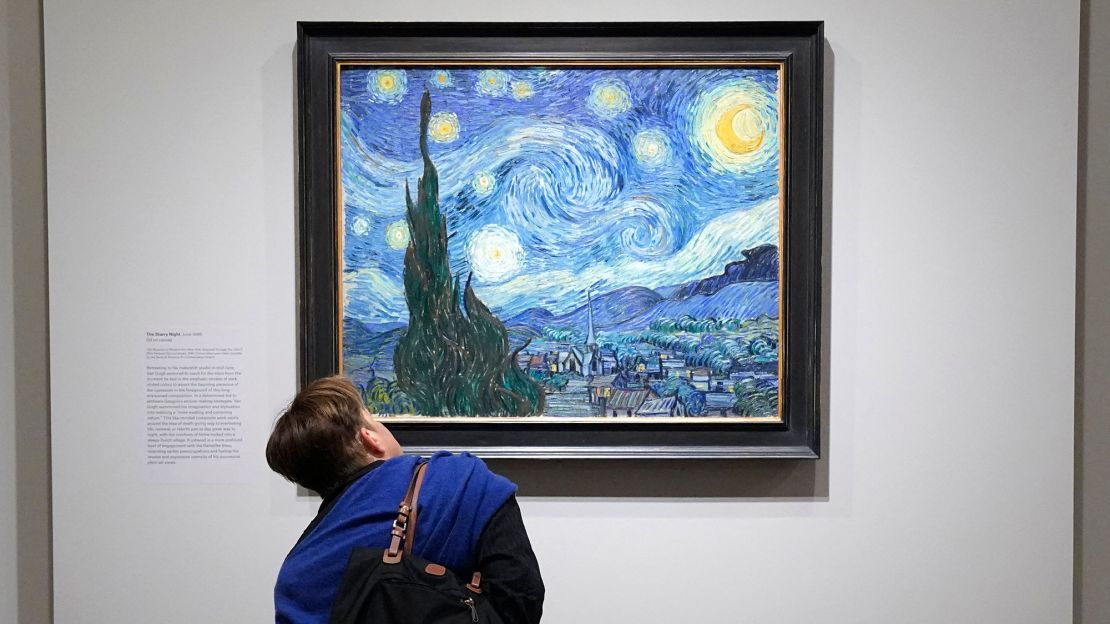Editor’s note: A version of this story appeared in CNN’s Wonder Theory science magazine. To get it in your inbox, register for free here.
CNN
–
Komodo dragons with metal pointed teeth. Thirteen foot long pythons. Invasive crocodiles. Of the five main groups of vertebrates, reptiles often inspire the most fear.
But reptiles deserve our sympathy — and conservation dollars — just as much as mammals, which may seem more fascinating. One in five reptile species are endangered.
I try to change my feelings of dissatisfaction towards these creatures with surprise. Reptiles are incredibly diverse, adapting to surprising conditions like a Costa Rican lizard that has evolved to “submerge,” according to new research.

The diving anole lives in the forest of Costa Rica, where it is able to create small bubbles in its head as a source of oxygen when submerged. This ability allows the lizard to stay underwater for long periods of time.
A rare and unique behavior, captured by researchers as part of a new study, may help anoles hide from predators in the wild.
The wee anole relies heavily on hiding from predators such as birds, snakes, mammals and other lizards. And when hiding fails, waiting for the threat underwater is an effective survival strategy.
Kaspar Hauser, a mysterious man who some consider a “lost prince,” died in 1833. Little is known about his origin story.
Hauser had a mysterious birth in what is now Nuremberg, Germany, on May 26, 1828, when he was about 16 years old. He was found wandering in the town square without no information and holding an unsigned letter in his hand.
Nearly 200 years later, scientists have used a new DNA test to solve a long-standing mystery about Hauser’s suspected royal ties.

Since 1977, NASA’s Voyager 1 spacecraft has been exploring the solar system even further.
The spacecraft was the first spacecraft to cross the heliosphere—the sun’s bubble of gravity and particles that extend beyond the orbit of the planets—and into interstellar space, or space. what is between the stars. Along the way, Voyager 1 discovered a thin ring around Jupiter and two new Jovian moons as well as five new moons around Saturn.
Now, the space station would have found a way to keep a 47-year-old probe communicating with Earth from billions of miles away.
NASA engineers have successfully fired a set of thrusters Voyager 1 hasn’t used in decades, which would help keep its antenna pointed at Earth.
In other news, NASA astronauts Butch Wilmore and Suni Williams will be able to vote in absentee ballots from low-Earth orbit in the November election. The pair’s stay aboard the International Space Station was extended until 2025 after arriving in June aboard Boeing’s troubled Starliner test flight. The trip was originally expected to take about eight days.
A flooded area near Bristol, England, is a test site for a bold plan to create an underwater habitat.
The goal of DEEP, a UK-based ocean technology company, is to build connected modules that will allow humans to live and work at a depth of 656 feet (200 meters) up to the moon .
A 40-by-25-foot (12-by-7.5-meter) shelter with enough space for three people to stay underwater for up to a week will be ready to move in. in water at DEEP’s UK campus in early 2025.
The company hopes that its habitats can achieve permanent human presence underwater, similar to the International Space Station – which has allowed people to live and work in space since 2000 – but for the sea.

Vincent van Gogh’s masterpiece “The Starry Night” is a tricky work of art. It is also incredibly scientifically accurate.
A new analysis of the painting by physicists based in China and France suggests that the artist had a deep, clear understanding of the mathematical structure of turbulent flow, a common phenomenon of nature seen through water such as moving water, ocean currents and storm clouds.
Scientists determined that the size of the 14 whorls or eddies in “The Starry Night,” and their relative location and strength, follow a natural law governing fluid dynamics known as Kolmogorov’s theory. turbulence.
The physics behind Van Gogh’s painting of the night sky may be another reason why people are attracted to this painting.
— A polished bronze sword inscribed with the name of King Ramses II in hieroglyphics was unearthed in Egypt.
– Helga and Zohar, two mannequins that flew in the Orion spacecraft during the unmanned Artemis I mission in 2022, reveal how much experience astronauts can have in Artemis missions coming.
– A full harvest moon shone brightly in the night sky earlier this week. A partial lunar eclipse, with a “bite” taken from the moon, was also visible to sky watchers.
– Earth will soon find a “little moon,” a newly discovered asteroid called 2024 PT5. The space rock will be temporarily captured by Earth’s gravity and orbit our planet for several weeks, according to astronomers.
Like what you read? Oh, but there is more. Register here to receive in your inbox the next issue of Wonder Theory, brought to you by CNN Space and Science writers. Ashley Strickland and Katie Hunt. They find wonder in the planets beyond our solar system and their discoveries in the ancient world.
#small #lizard #scuba #dives #hides #predators #CNN